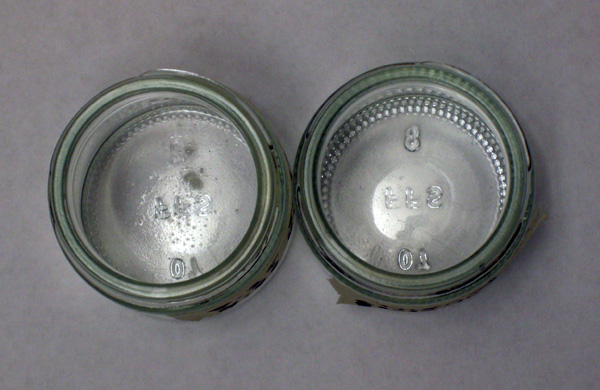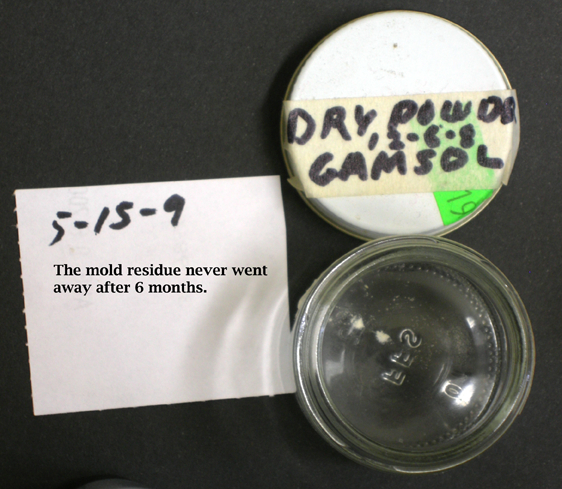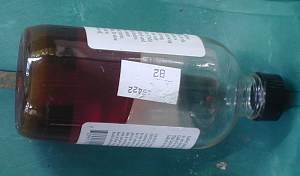

|
I'm afraid I have to start with out pulling any punches. Gamblin's main objective is to sell their product. To do this they have to create reasonable doubt that you are better off with out turpentine and damar in your paint. Fear is the tool of choice. With out getting political you know how persuasive this tool is. I'm going to quote from their Solvent Comparison Chart handout. The first topic is "A Low Solvent Level Studio". (They started with this first punch) "Remove turpentine, and painting mediums that contain mixtures or damar resin varnish and turpentine to make your studio safer." So to start with they say turpentine is toxic and mineral spirits are not. That's their claim... No - that's not true.. drinking mineral spirits will kill you faster than drinking turpentine. It was the lead from his paint in his turpentine that sent Van Gogh to the mental hospital and killed him, not the turpentine that he thought was his wine. Pure turpentine was used as an external medicine in days of old, http://www.healthcentral.com/peoplespharmacy/408/61106.html - http://www.geocities.com/heartland/hills/8929/cures.html - Petroleum products dry in oil paint differently than tree turpentine does and should be used only as a cheap brush cleaning solvent. (but not on my fine brushes, thank you) Doerner explained in his 1934 book, the one Mayer copied, The Materials of the Artist, and explained how "they are unnatural with paints that absorb oxygen while drying, being refined from a nondrying petroleum oil, they only evaporate, without absorbing oxygen. Petroleum thinners are good only for cleaning brushes of the house painting trade, not the expensive brushes we use as artists. They should be cleaned in brush oil. Petroleum thinner will not dissolve the valuable damar varnish either, as turpentine does so well." At 12:30 PM on Aug 20th, 2008 I put 16 measured drops into two similar small jars to test Gamblin's claim stated in their yellow handout called "Solvent Comparison Chart." It states that Gamsol is a highly refined odorless mineral spirit (OMS) that evaporates 100% and leaves no sticky residue in the paint film. That Gamsol is 100% aliphatic, which means it contains no harmful aromatic components at all. Excellent solvent for thinning Galkyd and oil paints. On Aug. 25th, 10PM. I took this photo of the two jars. The turpentine jar on the right is empty, at the bottom of the jar is a dry layer of clear film, I could tell even though it was not wet a film was covering the glass. It had been dry since Aug. 21st, 15 hours after the test started. The Gamsol on the other hand still was not dry 130 hours later. This was very troubling, mold is growing and it looks like wet cotton. I don't know how much longer there will still be liquid in the bottom of the jar but right now my finger smears oil. Aug. 27th, still not evaporated. Now I can call it a propaganda chart, the truth is Gamsol does not dry in a "Moderate" time as Gamblin Solvent Comparison Chart claims, "siting turpentine dries 5 times faster then Gamsol." The fact is turpentine was dry nine times faster.. so far. All oil paints normally are dry by 3 days if no drier is added to them. I don't like the unmentioned fact that Gamsol dries slower then oil paint. This gamsol has been wet for five days already and mold is growing in the wet. Don't use it. Artists have know this since da Vinci tried painting with "rock oil" as he called it. Just say no.
 Any artist that has made their own oil media knows damar and wax make the paint paint better and yellow less, You as an artist need turpentine. By the way, their handout didn't mention that Gamsol and wax dissolve milky at best , and it stays milky when dry while turpentine disolves clear. Most tubed paint has a little wax in them. Mussini has wax and damar. Six months later the mold was still there and I needed the jar for another project. Don't let big petro push you around.  http://www.winsornewton.com/main.aspx?PageID=406&path=products%2foils-solvents-mediums-varnishes%2ffrequently-asked-questions%2f#l7 Solvents
There are however several issues concerning these two solvents.
White spirit gives more watery mixes, making the colour slightly less controllable and does not stay open as long as turps.
The gum will also cause yellowing. It is therefore imperative that Artists turpentine and not that sold as Genuine Turpentine for home decorating, the gum has been removed from the former by repeated distillation.
In addition, turpentine will oxidise if left exposed to daylight or air, also resulting in tackiness and yellowing in the painting. Turps should therefore be stored in well filled and sealed bottles away from daylight. White spirit has neither a gum residue nor will it deteriorate on storage.
iii) Price - Turpentine is considerably more expensive than white spirit.
anti-turp says. iv) Toxicity; Turpentine is slightly more harmful than white spirit.
3. What are the effects of using Turpentine Substitute? Turpentine Substitute should never be used with oil colour. It is a cheap DIY solvent, which when used, runs the risk of discolouration and non-drying of the oil colour. Its only acceptable use for artists is for cleaning brushes (not my brushes thank you). The number of tacky paint films resulting from old turps or cheap DIY solvents are second only to the number of problems with sinking. 4. What is the nearest equivalent to Turpenoid?
All solvents vary in strength and their capacity to 'loosen up' the body of the colour. The artists' grade solvent with the greatest power is Distilled Turpentine, the only artists' grade solvent capable of easily dissolving Dammar resin. anti-turp says. Turpentine makes a viscous mixture, evaporates slowly, is the most hazadous and strongest smelling solvent commonly used by artists.
5. What factors need to be considered when selecting a solvent?
anti-turp says. Artists turpentine evaporates slowly and produces viscous mixtures. White spirit evaporates more quickly and produces more watery mixtures. Sansodor [low odour solvent] evaporates slowly and produces viscous mixtures. Although many artists may argue that turpentine makes a more controllable colour, a low quality turpentine will be inferior to white spirit. ii) Price - English Distilled Turpentine and Sansodor are equally priced.
anti-turp says. Relative to each other, turpentine is more hazardous than white spirit, which in turn, is more hazardous than Sansodor.
anti-turp says. Mediums
All mediums should be used in moderation, they are intended only as an additive to the colour. In addition, you should avoid adding multiple mediums to the colour. The most stable film is likely to contain a single medium.
Note: "White Spirit" was the name of alcohol made from grapes used to dissolve sandracca paints before oil based paints.
anti-turp says. Artists' White Spirit (W&N) Is a volatile, flammable diluent (thinner) for oil colours and the cleaning of brushes. Whilst it has a characteristic odour, this is less pronounced than Turpentine. This makes a watery mixture, evaporates quickly, is less hazardous than Distilled Turpentine, less costly and does not deteriorate on storage. anti-turp says. "A volatile, flammable diluent (thinner) for oil colours and the cleaning of brushes."
anti-turp says. Whilst it has a characteristic odour, this is less pronounced than turpentine.
anti-turp says. This makes a watery mixture, evaporates quickly.
anti-turp says. and is less costly and does not deteriorate on storage.
I can't help but to put this new product of theirs here, 7-3-9.
And while I'm at it, look what Da Vinci Paints are using as the picture for their Indian Yellow product. Buyers beware. The image is Indian yellow but their product is Transparent PY 42 Lightfastness I.
 PY:42 is an oxide and oxides are not transparent, yellow oxide that looks like all translucent non-dual-toned oxide pigments. If you buy this color you lose. They are not the first company to misrepresent their colors. I have to say I like the drying speed of alkyds, I like being able to crawl all over my painting in three hours. Another nice thing about alkyd, you don't need much of it. 25-30% added to thinner (turpentine) and you're in there. I had to use a lot higher percent of oil in oil paintings which yellows more than alkyds. Not that alkyds don't yellow. I had a bottle that let in some air, but the top wasn't off, and it dried solid and brown.  If you ever wanted to extend the drying time of Alkyd a drop of linseed oil will do it fine. Me? I use a hair drier, I like it fast! Nahiku Path to the Sun with Alkyd Permissible Exposure Levels are measured in parts per million, this OSHA standard rates solvents by how strong and how much solvent is safe to work around before the air is considered hazardous. (Gamsol says) The higher Permissible Exposure Level indicates a slower evaporation rate. Gamsol has a 300 rating (They say).. Turpentine has a 100 rating, meaning it evaporates faster then a solvant. I say Gamblin should go back to these tables and re-read it. Here are substances I pulled from the OSHA Regulations I found on Google. This OSHA excerpt shows Acetone as one example: You can see the PEL #1000 has nothing to do with evaporation as Gamblin states. Regulations (Standards - 29 CFR)
By spending a few hours on Google searching turpentine and petroleum distillates I noted the earlier references and encyclopedias don't mention turpentine as being dangerous, while the newer edited pages use the same terms and phrases over and over, either grouping it with mineral spirits as an artist solvent or calming it to be toxic. Never are mineral sprits show as being very poisonous and deadly. Something is foul here. This all happened in the last 10 years. The promoters of mineral sprits are writing Wikipedia, e.i.
BASED SOLVENT Gamsol is a STODDARD SOLVENT or petroleum based.
DANGER! HARMFUL OR FATAL IF SWALLOWED. AFFECTS CENTRAL NERVOUS SYSTEM. MAY AFFECT KIDNEYS. FLAMMABLE LIQUID AND VAPOR. HARMFUL IF INHALED. CAUSES IRRITATION TO SKIN, EYES AND RESPIRATORY TRACT. Health Rating: 2 - Moderate (Life) Flammability Rating: 2 - Moderate Reactivity Rating: 1 - Slight Contact Rating: 3 - Severe Lab Protective Equip: GOGGLES & SHIELD; LAB COAT & APRON; VENT HOOD; PROPER GLOVES; CLASS B EXTINGUISHER Storage Color Code: Red (Flammable) Inhalation:
Ingestion:
Skin Contact:
Eye Contact:
Chronic Exposure:
Aggravation of Pre-existing Conditions:
Some of the TPH compounds can affect your central nervous system. One compound can cause headaches and dizziness at high levels in the air. Another compound can cause a nerve disorder called "peripheral neuropathy," consisting of numbness in the feet and legs. Other TPH compounds can cause effects on the blood, immune system, lungs, skin, and eyes. Animal studies have shown effects on the lungs, central nervous system, liver, and kidney from exposure to TPH compounds. Some TPH compounds have also been shown to affect reproduction and the developing fetus in animals. Turpentine (also called spirit of turpentine, oil of turpentine, wood turpentine, gum turpentine) is a fluid obtained by the distillation of resin obtained from trees, mainly pine trees. It is composed of terpenes, mainly the monoterpenes alpha-pinene and beta-pinene. The two primary uses of turpentine in industry are as a solvent and as a source of materials for organic synthesis. As a solvent, turpentine is used for thinning oil-based paints, for producing varnishes, and as a raw material for the chemical industry.
Turpentine is also used as a source of raw materials in the synthesis of fragrant chemical compounds. Commercially used camphor, linalool, alpha-terpineol, and geraniol are all usually produced from alpha-pinene and beta-pinene, which are two of the chief chemical components of turpentine. These pinenes are separated and purified by distillation. The mixture of diterpenes and triterpenes that is left as residue after turpentine distillation is sold as rosin. Turpentine is also added to many cleaning and sanitary products due to its antiseptic properties and its "clean scent". In early 19th Century America, turpentine was sometimes burned in lamps as a cheap alternative to whale and nut oils. Turpentine has been used medicinally since ancient times, as topical and sometimes internal home remedies. Topically it has been used for abrasions and wounds, as a treatment for lice, and when mixed with animal fat it has been used as a chest rub, or inhaler for nasal and throat ailments. Many modern chest rubs, such as the Vicks variety, still contain turpentine in their formulations. Though internal administration is no longer common today, it was once administered by masking the taste by dosing sugar cubes, molasses, or honey, or when unavailable, straight. It was a treatment for intestinal parasites due to its antiseptic and diuretic properties, and a general cure-all.
I'd say Gamsol is for the birds, but it would kill them. I'm glad their brochure at least says to dispose of it at the same place you dispose of used oil. 1-18-16, http://www.naturalpigments.com/rublesol-odorless-mineral-spirits.html I agree with most of what naturalpigments.com sells but not Rubesol, a petroleum product like other artificial thinners. "Safety Information: WARNING! Contains Petroleum Distillates. Flammable liquid and vapor. Harmful if swallowed, inhaled or absorbed through skin. Affects central nervous system." Rubesol is not odorless either, the vapor is poisonous and accumulative. I can smell it and won't even clean my brushes in it. naturalpigments.com, I think you have been swindled by Big Oil. Testimonial:
Hi Don:
BTW, I had used gamsol alkyd-linseed for about ten years.
Michelle |
NEXT PAINTING, Opera w/c painting, operamagentasilk-greencarnations-wc11x15.htm
PREVIOUS PAINTING,
Jacaranda Makawao Library 2008 acrylic
END PAGE Last Painting w/tips